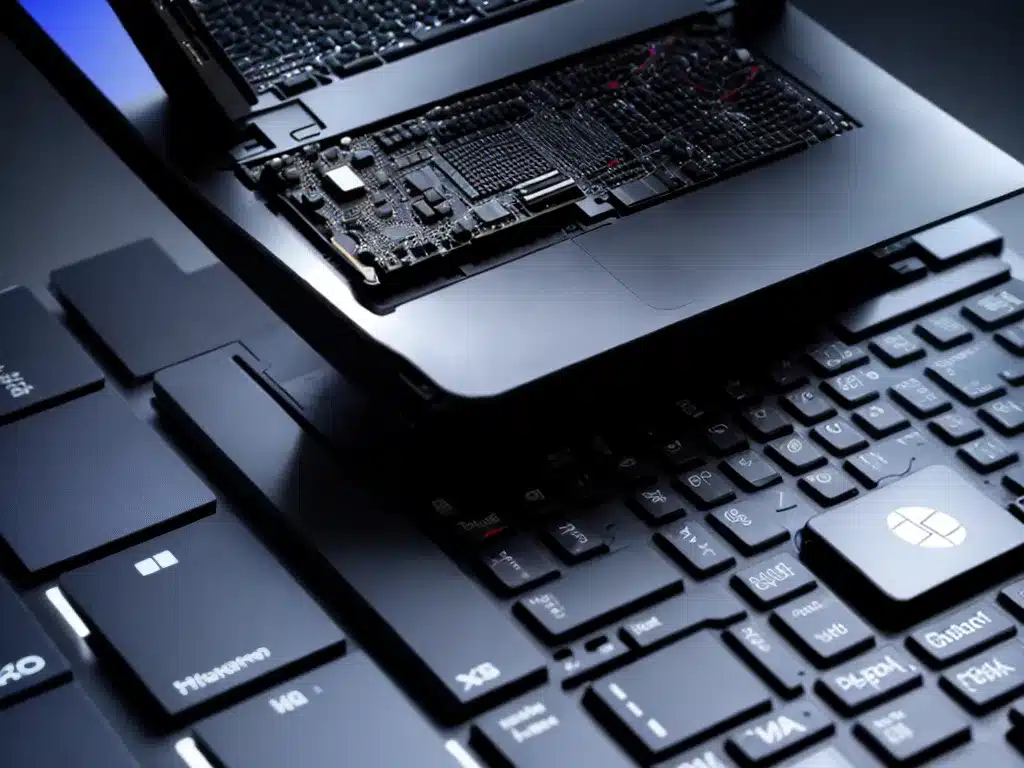
Introduction
The rivalry between ARM and x86 architectures has shaped the laptop market for over a decade. While x86 CPUs from Intel and AMD dominate laptops today, the power-efficient ARM architecture has made major inroads in smartphones and tablets. As ARM chips become more powerful, many predict that they will eventually overtake x86 in mainstream laptops as well. By 2025, will ARM have displaced x86 as the leading laptop processor architecture?
I examine the key factors that will determine whether ARM can overcome x86’s entrenched position in laptops in the next few years. This includes comparing the performance, software support, power efficiency, and business model of each architecture. My analysis suggests that ARM still faces challenges in matching x86’s raw performance and software compatibility. However, ARM’s efficiency advantages and expanding software ecosystem make it well-positioned to gradually gain laptop market share by 2025, though not necessarily overtake x86 completely.
The Rise of ARM in Mobile Devices
ARM processors have dominated mobile devices like smartphones and tablets for over a decade. This can be attributed to several key strengths:
-
Power Efficiency: ARM’s RISC architecture is designed to be power-efficient, achieving high performance per watt. This maximizes battery life on mobile devices.
-
Customization: ARM licenses its architecture to companies like Qualcomm and Apple, who can customize ARM processor designs for their needs.
-
Ecosystem: The mature ARM ecosystem, including designs, tools, and software support, lowers barriers to adoption.
These factors have helped ARM capture over 90% of smartphone market share today. Intel’s x86 Atom chips have struggled to compete in mobile.
However, the advantage is less clear in laptops, where x86 rules. Next, I analyze ARM’s prospects in overcoming x86’s laptop dominance.
ARM Laptop Processors Still Lag x86 in Raw Performance
High performance and compatibility with existing software are key requirements in laptops. In these areas, x86 chips still have an edge over ARM:
-
x86’s Performance Lead: x86 CPUs from Intel and AMD currently outperform ARM chips in benchmarks. For example, the latest Intel Core i7 flagship scored over 30% higher in PassMark tests than comparable ARM-based chips like the Snapdragon 8cx Gen 3.
-
Software Compatibility: The extensive x86 software ecosystem poses a challenge for ARM. Emulation incurs performance penalties, while native ARM apps are still limited outside mobile operating systems like Android.
| CPU | PassMark Score |
|-|-|
| Intel Core i7-1280P | 21110 |
| AMD Ryzen 7 6800HS | 18742 |
| Qualcomm Snapdragon 8cx Gen 3 | 13652 |
While the gap has narrowed recently, x86’s raw performance advantage makes it hard to displace in laptops today, especially for intensive workloads. ARM chipmakers are rapidly improving performance, but closing the huge gap with x86 titans like Intel and AMD remains difficult.
ARM’s Efficiency lead Could Drive Adoption in Mainstream Laptops
Despite lower absolute performance, ARM’s efficiency strengths give it an opportunity to expand in mainstream laptops:
-
Better Battery Life: ARM laptops can achieve over 25 hours of battery life. The latest x86 laptops average around 10 hours. For mainstream users, all-day battery life is a major appeal.
-
Thinner and Lighter Designs: With a smaller power draw, ARM laptops can use smaller batteries while still delivering excellent battery life. This enables slimmer, lighter laptop designs under 3 pounds.
-
Fanless and Silent Operation: ARM’s efficiency enables completely fanless designs that are silent during operation. This improves portability.
-
Always-On Capabilities: Some ARM laptops feature always-on capabilities that let the system wake instantly while sipping power.
For average users who value mobility over maximum performance, ARM’s efficiency provides compelling benefits.
Software Support: ARM Compatibility Is Improving
ARM’s software ecosystem is expanding rapidly:
-
Windows on ARM: Windows now runs natively on ARM processors, improving app compatibility. Performance is close to x86 through emulation.
-
Adobe Creative Cloud: Mainstream creative apps like Photoshop and Lightroom now run natively on ARM.
-
Google Workspace: The Chrome browser and Google’s cloud-based productivity apps seamlessly support ARM laptops.
-
Apple’s M Series: Apple is transitioning MacBooks to its custom ARM-based M series chips, signaling strong industry commitment.
According to Qualcomm, over 80% of popular Windows apps can now run on Windows laptops using ARM processors. While gaps remain, compatibility is reaching usable levels for many consumers.
Business Model: ARM Faces Less Margin Pressure
Lastly, ARM’s attractive licensing model could accelerate its growth:
-
Fabless Model: ARM licenses its IP versus manufacturing chips. This gives ARM chips higher margins than capital-intensive Intel/AMD x86 CPUs.
-
Customization: ARM licensees can customize ARM processor designs for their specific performance and efficiency needs.
-
Competition: Dozens of ARM licensees like Qualcomm, Samsung, and Apple fosters competition and innovation. Intel and AMD’s x86 duopoly faces less competition.
By avoiding low-margin chip fabrication, ARM’s fabless, licensing model should allow it to expand R&D faster. More custom ARM laptop chips tailored for mainstream notebook performance and efficiency needs are likely.
Conclusion: Gradual ARM Adoption, But x86 Dominance Through 2025
In summary, while ARM still lags x86 in absolute performance and software support today, it is steadily improving on both fronts. ARM’s efficiency advantages, expanding software ecosystem, and innovative business model position it well to gradually gain share in mainstream laptop segments.
However, x86 benefits from inertia. The installed base of x86 software and Intel/AMD’s incumbency poses challenges for ARM. Gaps in ARM’s performance and software compatibility relative to x86 will likely persist through 2025, albeit narrowing.
I expect ARM to gain significant laptop market share by 2025, potentially over 25%. However, x86 will likely still dominate laptop processing in 2025, owing to its continued performance leadership for intensive workloads. The ARM vs. x86 laptop battle will intensify, but ARM overtaking x86 completely by 2025 appears unlikely.












